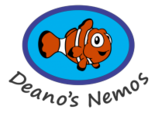With the use of the verbal cue, you can successfully help your baby have the best chance possible to survive in the water!
As mentioned in my previous post, infants are born with the natural ability to hold their breath underwater for a short period of time and are very comfortable in a watery environment. After they reach 6 months old, however, this reflex slowly fades away if you are not proactive in sustaining it!
Luckily for you, it can be done easily through a simple stimulus-response that is listed below.
- Take half a cup of water, preferably in a brightly coloured cup to add visual stimulation.
- Gain your child’s attention using the cup as a visual cue.
- Using the keywords ‘Child’s Name, Ready, Go!’ pour the cup of water evenly and consistently across the child’s head. This Cue, ‘Name, Ready, Go! is extremely important in the conditioning process. The phrase is a trigger which tells the child to prepare to hold their breath.
- Congratulate and provide positive reinforcement to your baby. This will increase the child’s enthusiasm, confidence and relaxation towards this process, and with being in the water.
Once your child is comfortable with having a small amount of water poured over their face, you can increase the amount of water in the cup. This will improve the breath-holding capacity of your baby.
And of course, your baby must be supervised at all times throughout this water-conditioning activity.
When to stop
If your child is crying, distressed or has ingested water you should stop the conditioning process and remove them from the bath.
You can use lots of positive reinforcement if your baby is upset or has accidentally ingested water. Also, you can use vibrant toys or give them a new activity to do to provide an effective distraction.



